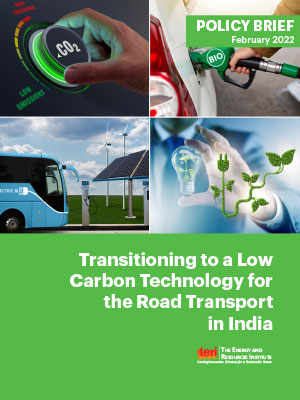Transitioning to a Low Carbon Technology for the Road Transport in India
India is the world’s third largest emitter of greenhouse gas emissions. At present, India accounts for a significant multimodal road transport sector contributing approximately 10 per cent of country’s total CO2 emissions, making it the second most carbon emitting sector in the country. Driven by rising population, income, and urbanization, under a business-as-usual scenario, India’s energy demand from transport is projected to increase six fold in 2050 from current levels. Therefore, decarbonizing the transport sector in India can help to substantially reduce these environmental impacts.
This policy brief is an attempt to understand the current policy landscape of the Indian transport sector and its plans to transition to a sustainable growth paradigm through assessing the energy demand and emissions in the long-term scenario. The assessment is done through development of a comprehensive road transport model, which takes each of the vehicle segments and technology types into account under the broad categories of passenger and freight vehicles. Accordingly, depending upon the technology penetration, the gaps and barriers are highlighted along with a line of recommendations to overcome the challenges for a low carbon development of the transport sector in India.


